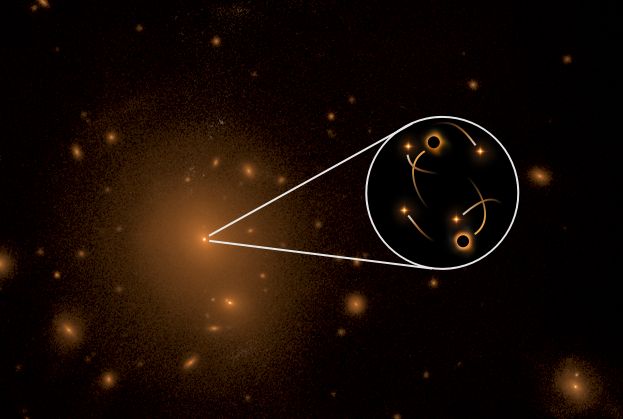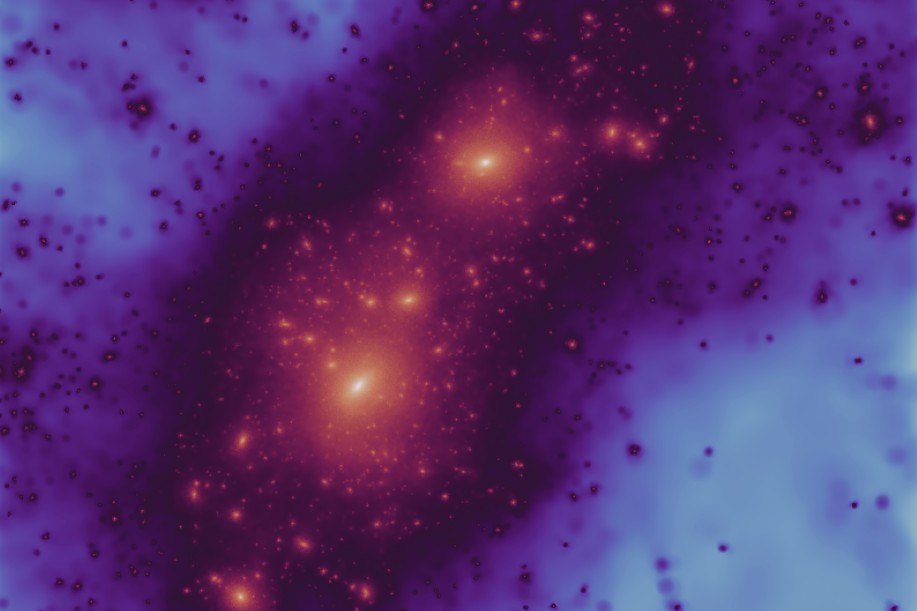KETJU
The KETJU project, funded by the European Research Council (ERC) and the Academy of Finland (AoF), studies the dynamics and impact of supermassive black holes using numerical simulations. The code that enables these simulation is publicly available.
SIBELIUS
The SIBELIUS project, also funded by the Academy of Finland (AoF), investigates the formation and evolution of the Local Group of galaxies in their true cosmic environment by utilising constrained numerical simulations.
Other research topics of our group members include the formation and evolution of stellar clusters, radiative transfer in the vicinity of compact objects, the formation of the first supermassive black holes, and the formation and evolution of massive galaxies.
Latest News
Published Article: Caught in the Act: Detections of recoiling supermassive black holes from simulations
The coalescence of two spinning supermassive black holes (SMBHs) results in the merged SMBH being kicked out from the centre of the galaxy surrounded by a cluster of stars - a black hole recoil cluster (BRC). We assess the detectability of this phenomenon for large-scale extragalactic surveys such as Euclid, from which targeted follow-up kinematic observations can be done to confirm the presence of an off-centred SMBH. A significantly-increased velocity dispersion coinciding with the BRC, detectable with upcoming Extrememly Large Telescope instruments such as MICADO, offer our best chances of confirming these objects. We use Gaussian process regression and transformation sampling to predict that there should be approximately 8000 such BRCs detectable out to redshift 0.6.
Workshop: Advancing massive black hole modelling across galactic scales
We organised a workshop, which was held on July 28-30, 2025 at the City Centre Campus of the University of Helsinki. The workshop had 36 participants, and over a three-day period, we discussed various research topics, including the formation of supermassive black holes, the dynamics and feedback of supermassive black holes, as well as the formation and evolution of both nuclear and globular stellar clusters.
Published Article: No certainty about the predicted Milky Way - Andromeda collision
Our recent article challenges the status quo of an unavoidable collision between our Galaxy and our nearest neighbour - the Andromeda galaxy. The article has featured in a number of press releases (see here for more information): the University of Helsinki press release can be found here.
Contact
For any enquiries, please contact Prof. Peter Johansson

